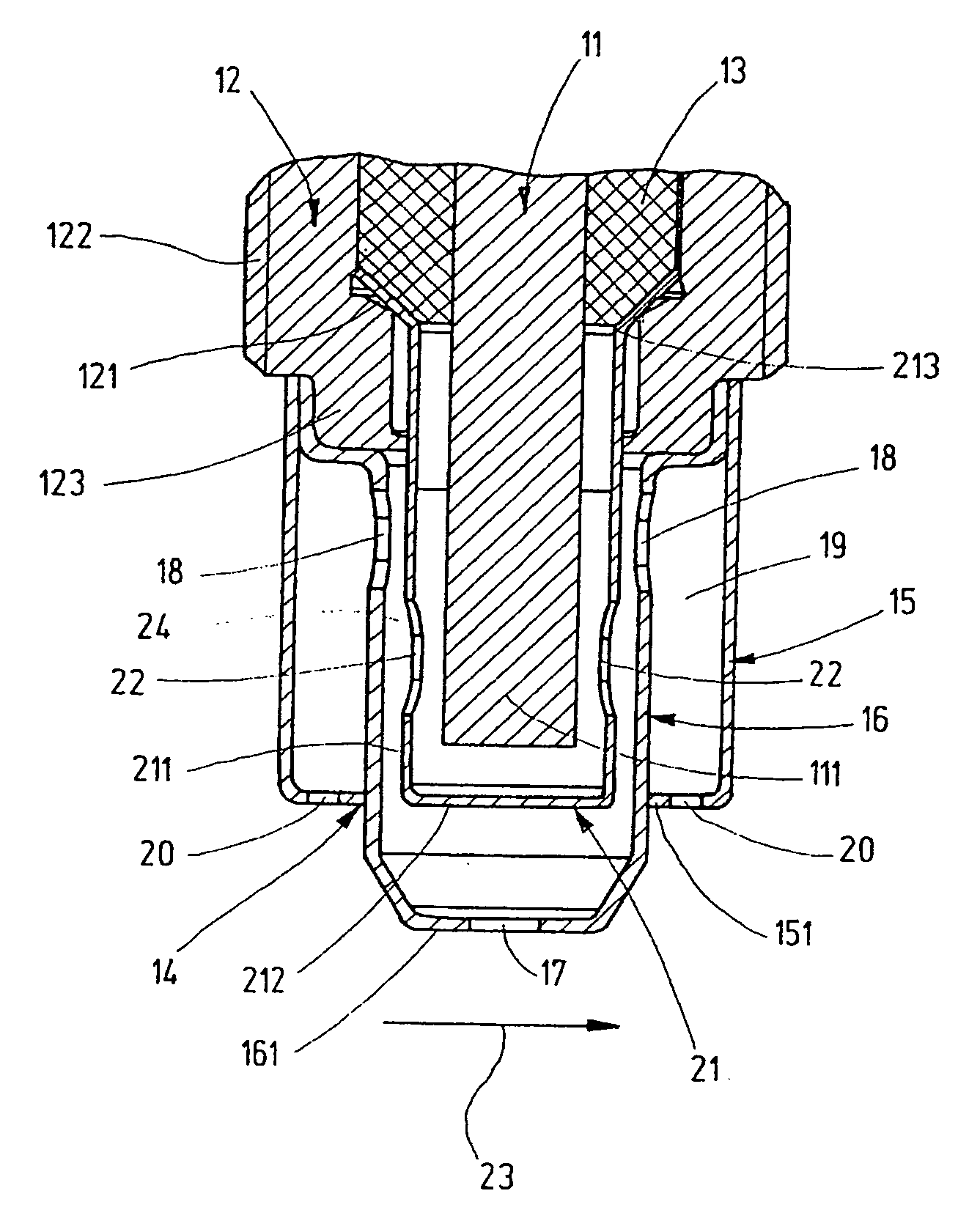Sensor
a sensor and sensor technology, applied in the field of sensors, can solve the problems of lowering the heating power demand of the sensor, and achieve the effects of improving the protection of the sensor element, reducing heat loss, and reliable protection
- Summary
- Abstract
- Description
- Claims
- Application Information
AI Technical Summary
Benefits of technology
Problems solved by technology
Method used
Image
Examples
Embodiment Construction
[0012] A three-way catalytic converter having a lambda regulation is used for reducing the exhaust emission of internal combustion engines. The lambda sensor illustrated in FIG. 1 in a schematic cross section is used for controlling the air / fuel mixture in order to set a mixture as close to the stoichiometric ratio as possible by measuring the oxygen content in the exhaust gas, so that the harmful emissions are minimized due to optimum combustion. This lambda sensor is described in the following as an exemplary embodiment for a general sensor used as a gas sensor with which a physical property of a measuring gas, e.g., the temperature of the measuring gas or the concentration of a gas component in the measuring gas, is measured.
[0013] The lambda sensor has a sensor element 11 made of a ceramic material including an end section 111 on the gas side exposed to the exhaust gas and an end section (not shown) on the connection side in which electrical contacting of sensor element 11 is e...
PUM
| Property | Measurement | Unit |
|---|---|---|
| wall thickness | aaaaa | aaaaa |
| physical characteristic | aaaaa | aaaaa |
| temperature | aaaaa | aaaaa |
Abstract
Description
Claims
Application Information
 Login to View More
Login to View More - R&D
- Intellectual Property
- Life Sciences
- Materials
- Tech Scout
- Unparalleled Data Quality
- Higher Quality Content
- 60% Fewer Hallucinations
Browse by: Latest US Patents, China's latest patents, Technical Efficacy Thesaurus, Application Domain, Technology Topic, Popular Technical Reports.
© 2025 PatSnap. All rights reserved.Legal|Privacy policy|Modern Slavery Act Transparency Statement|Sitemap|About US| Contact US: help@patsnap.com


